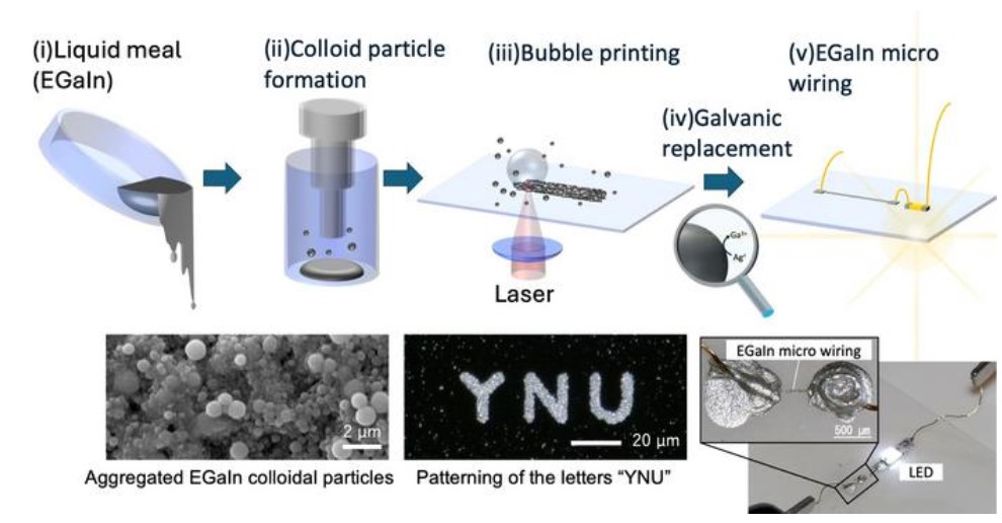This technique from a team at Yokohama National University is claimed to offer new options for creating bendable, stretchable, and highly conductive circuits for devices including wearable sensors and medical implants. Their study is detailed in Nanomaterials.
In a statement, corresponding author Shoji Maruo, a professor at the Faculty of Engineering of Yokohama National University, said: “Conventional wiring technologies rely on rigid conductive materials, which are unsuitable for flexible electronics that need to bend and stretch.”

Liquid metals show promise as an alternative to rigid materials but using them comes with challenges.
“Liquid metals provide both flexibility and high conductivity, yet they present issues in wiring size, patterning freedom, and electrical resistance of its oxide layer,” said Masaru Mukai, an assistant professor at the Faculty of Engineering and the study’s first author.
The research team addressed these limitations by adapting a bubble printing method to pattern liquid metal colloidal particles of eutectic gallium-indium alloy (EGaIn). Bubble printing is an advanced technique for creating precise wiring patterns directly onto surfaces, especially on non-traditional or flexible substrates, using particles that are moved by the flow generated by bubbles.
The team employed a femtosecond laser beam to heat the EGaIn particles, generating microbubbles that guide them into exact lines on a flexible-glass surface.
“The key is to improve conductivity by replacing the resistive gallium oxide layer with conductive silver via galvanic replacement,” said Maruo.
The resulting wiring lines were extremely thin, conductive and highly flexible.
“Our liquid metal wiring, with a minimum line width of 3.4μm, demonstrated a high conductivity of 1.5 x 105S/m and maintained stable conductivity even when bent, highlighting its potential for flexible electronic applications,” said Mukai.
By achieving reliable, ultra-thin liquid metal wiring, this method opens possibilities for creating soft electronics in wearable technology and healthcare applications, where flexibility and precise functionality are necessary.
“Our ultimate goal is to integrate this method with electronic components, such as organic devices, enabling practical, flexible devices for everyday use,” said Maruo. “We see potential applications in areas like wearable sensors, medical devices, and other technologies that require flexible, durable wiring.”











Comment: Hybridisation is a new era for aerospace
Reduced weight & simplification of the combustion engine operating , If hybrid cars are anything to go by. Further weight reduction might be...